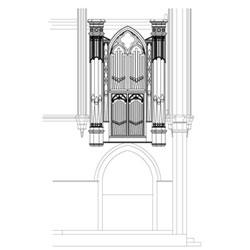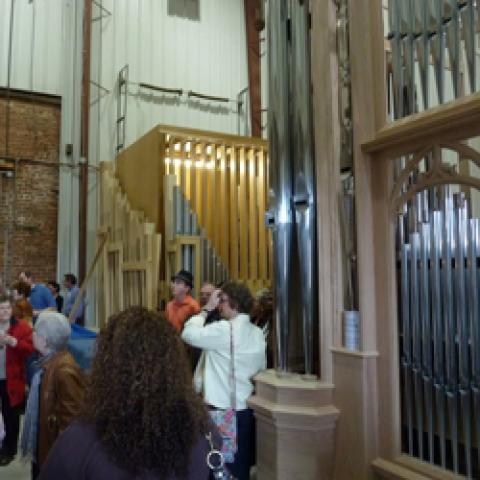
Goulding & Wood Organ Builders announces a new contract for their Opus 50 at the Episcopal Church of the Good Shepherd in Lexington, Kentucky. The new organ, comprising 48 stops and 57 ranks, will speak from twin chambers in the chancel and twin cases standing on the west wall of the nave.
The church features a wealth of architectural details, including extensive carved details. The reredos features a sculptural tableau of the Last Supper, and Tudor roses adorn the choir stalls. The organ casework will pick up on these elements and reinforce the Gothic detail present throughout the church.
Tonally, the organ offers a wide variety of accompaniment colors useful in playing the Anglican choral service. Each division is built upon an 8′ Diapason of differing color and dynamic. The 8′ Open Diapason in the Antiphonal organ is paired with a Diapason Celeste. Two solo reeds will crown the ensemble: a heavy Tuba enclosed in the Choir division and a brass-resonator Horizontal Trumpet framing the west wall’s lancet window.
The mobile four-manual console displaying further carved details in the cabinetry will provide comprehensive control systems for the instrument. Organists will be able to select modes whereby General toe studs can control Swell divisional pistons and Pedal divisional toe studs can control Great and Pedal divisional pistons together. Increasing the organ’s palette, Great stops will couple to the fourth manual in two groups, principal chorus and color stops. These capabilities supplement other typical controls, such as Great/Choir manual transfer, normal inter- and intra-manual couplers, and multi-level capture memory.
Organist and choirmaster John Linker and organ committee chair Joseph Jones worked closely with team members of Goulding & Wood in planning the tonal design and control systems. The church is embarking on significant modifications to the room, including creating one of the chancel chambers from unused storage space.
Construction of the organ at the Goulding & Wood shop in Indianapolis will occupy most of 2012, with installation planned for early 2013.
More information and work progress photos can be seen at
www.gouldingandwood.com and
www.goodshepherdlex.org.




